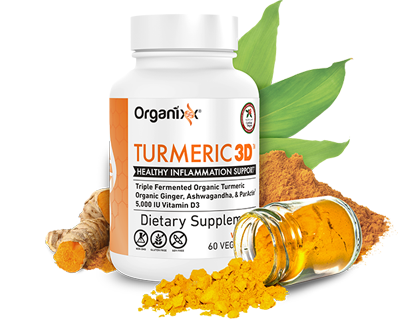The Earthbound Hound is all about things having to do with health and wellness. As we age, it gets progressively difficult to stay healthy. We aggregate information on how people can stay ahead of the curve.
-
23 Bikers vinden dit leuk
-
12 Berichten
-
7 foto's
-
1 Video’s
-
0 voorbeeld
-
Onderwijs
Actueel
-
Electro-culture is a fascinating and innovative method that uses electrical stimulation to promote plant growth. The basic idea is that by exposing plants to electric fields or currents, you can influence their growth rates, health, and yields. Electro-culture antennas, specifically, are devices designed to capture and transmit ambient electromagnetic energy to plants.
Here’s how it works: the antennas are typically made from conductive materials and are placed around or above the plants. They can capture natural electromagnetic energy from the environment—like that from the Earth's natural electric field or from atmospheric electricity. This captured energy is then transmitted to the plants, theoretically enhancing their metabolic processes.
Studies and experiments have suggested various benefits, including improved seed germination rates, faster growth, greater biomass yield, and enhanced resistance to pests and diseases. The underlying mechanisms may involve stimulation of cellular activities and alteration of ion transport within the plants, leading to more efficient nutrient uptake and better overall plant vigor.
Electro-culture isn't mainstream yet, and much of the evidence supporting its effectiveness comes from small-scale experiments or anecdotal reports. However, for enthusiasts of sustainable agriculture or those looking for an edge in plant cultivation, exploring electro-culture could open up new possibilities. As with any innovative agricultural technology, it's advisable to combine it with established best practices for the best results.Electro-culture is a fascinating and innovative method that uses electrical stimulation to promote plant growth. The basic idea is that by exposing plants to electric fields or currents, you can influence their growth rates, health, and yields. Electro-culture antennas, specifically, are devices designed to capture and transmit ambient electromagnetic energy to plants. Here’s how it works: the antennas are typically made from conductive materials and are placed around or above the plants. They can capture natural electromagnetic energy from the environment—like that from the Earth's natural electric field or from atmospheric electricity. This captured energy is then transmitted to the plants, theoretically enhancing their metabolic processes. Studies and experiments have suggested various benefits, including improved seed germination rates, faster growth, greater biomass yield, and enhanced resistance to pests and diseases. The underlying mechanisms may involve stimulation of cellular activities and alteration of ion transport within the plants, leading to more efficient nutrient uptake and better overall plant vigor. Electro-culture isn't mainstream yet, and much of the evidence supporting its effectiveness comes from small-scale experiments or anecdotal reports. However, for enthusiasts of sustainable agriculture or those looking for an edge in plant cultivation, exploring electro-culture could open up new possibilities. As with any innovative agricultural technology, it's advisable to combine it with established best practices for the best results.0 Reacties 0 aandelen 2K ViewsPlease log in to like, share and comment! -
Rediscovering Ancient Wisdom: Eggshells as a Modern Calcium Solution
Eggshells, often overlooked after cooking, are emerging as a valuable resource for meeting today’s calcium needs. Known for their high protein content and beneficial nutrients, eggs also leave behind a shell that is much more than just waste.
Eggshells: A Hidden Nutritional Gem
Eggshells are proving to be instrumental in reducing the risk of diseases like osteoporosis, enhancing cardiovascular health, and promoting better dental hygiene. These benefits position eggshells as a secret weapon for enhancing overall health.
The Power of Half an Eggshell
Composed primarily of 94% calcium carbonate, the tough outer layer of the eggshell is enriched with protein and essential minerals such as magnesium. Remarkably, each gram of eggshell contains about 380 milligrams of calcium. This means just half an eggshell is sufficient to meet the daily calcium requirement of 1,000 milligrams for an adult.
Eggshells as an Accessible Calcium Supplement
The abundance of calcium in eggshells makes them an excellent, cost-effective supplement. This is particularly vital in combating widespread calcium deficiencies that can lead to severe health issues like osteoporosis, pregnancy-related complications, certain cancers, and cardiovascular diseases. Additionally, the inner membrane of eggshells contains collagen, which is beneficial for skin health, joint function, and digestion.
Enhancing Bone Health and Healing
Research suggests that the calcium derived from eggshells is more bioavailable than that obtained from processed food sources. Various studies indicate that eggshell powder can help prevent and treat osteoporosis by improving bone and cartilage health. For instance, a study in the journal Nutrients highlighted that meals fortified with eggshell powder and vitamin D helped prevent bone loss in postmenopausal women at risk for osteoporosis.
The Nutritional Benefits of Eggshell Membranes
The eggshell membrane is rich in glycosaminoglycans, which are known to aid cell growth and wound healing. According to Jacqueline Vernarelli, a nutritional epidemiologist and professor at Sacred Heart University, this component of the eggshell has been shown to accelerate skin regeneration and improve wound healing by promoting cytokine production and reducing inflammation.
Easy Integration into Daily Diets
Integrating eggshell powder into your diet is simple, according to Ms. Vernarelli. It can be mixed into various foods such as soups, sauces, or even used as a seasoning in breading, making it a versatile addition to everyday meals. However, she stresses the importance of adhering to safety measures to avoid the risks associated with raw or undercooked egg components.
Considerations and Precautions
While the benefits of consuming eggshell powder are numerous, it's essential to consider potential allergies to egg proteins. Additionally, proper preparation is crucial to avoid health hazards such as throat irritation from sharp shell fragments or bacterial contamination from unsterilized shells.
Moreover, excessive intake of calcium from eggshells can lead to health issues like nausea, irregular heartbeat, and low blood pressure. It’s also crucial to monitor the interaction of calcium with other vitamins and medications, especially those that affect calcium absorption in the body.
In summary, eggshells offer a sustainable and economical approach to fulfilling daily calcium needs, with the added benefits of supporting bone health and healing. By considering the appropriate precautions and integrating eggshells into the diet wisely, one can harness the full potential of this ancient remedy in modern wellness practices.Rediscovering Ancient Wisdom: Eggshells as a Modern Calcium Solution Eggshells, often overlooked after cooking, are emerging as a valuable resource for meeting today’s calcium needs. Known for their high protein content and beneficial nutrients, eggs also leave behind a shell that is much more than just waste. Eggshells: A Hidden Nutritional Gem Eggshells are proving to be instrumental in reducing the risk of diseases like osteoporosis, enhancing cardiovascular health, and promoting better dental hygiene. These benefits position eggshells as a secret weapon for enhancing overall health. The Power of Half an Eggshell Composed primarily of 94% calcium carbonate, the tough outer layer of the eggshell is enriched with protein and essential minerals such as magnesium. Remarkably, each gram of eggshell contains about 380 milligrams of calcium. This means just half an eggshell is sufficient to meet the daily calcium requirement of 1,000 milligrams for an adult. Eggshells as an Accessible Calcium Supplement The abundance of calcium in eggshells makes them an excellent, cost-effective supplement. This is particularly vital in combating widespread calcium deficiencies that can lead to severe health issues like osteoporosis, pregnancy-related complications, certain cancers, and cardiovascular diseases. Additionally, the inner membrane of eggshells contains collagen, which is beneficial for skin health, joint function, and digestion. Enhancing Bone Health and Healing Research suggests that the calcium derived from eggshells is more bioavailable than that obtained from processed food sources. Various studies indicate that eggshell powder can help prevent and treat osteoporosis by improving bone and cartilage health. For instance, a study in the journal Nutrients highlighted that meals fortified with eggshell powder and vitamin D helped prevent bone loss in postmenopausal women at risk for osteoporosis. The Nutritional Benefits of Eggshell Membranes The eggshell membrane is rich in glycosaminoglycans, which are known to aid cell growth and wound healing. According to Jacqueline Vernarelli, a nutritional epidemiologist and professor at Sacred Heart University, this component of the eggshell has been shown to accelerate skin regeneration and improve wound healing by promoting cytokine production and reducing inflammation. Easy Integration into Daily Diets Integrating eggshell powder into your diet is simple, according to Ms. Vernarelli. It can be mixed into various foods such as soups, sauces, or even used as a seasoning in breading, making it a versatile addition to everyday meals. However, she stresses the importance of adhering to safety measures to avoid the risks associated with raw or undercooked egg components. Considerations and Precautions While the benefits of consuming eggshell powder are numerous, it's essential to consider potential allergies to egg proteins. Additionally, proper preparation is crucial to avoid health hazards such as throat irritation from sharp shell fragments or bacterial contamination from unsterilized shells. Moreover, excessive intake of calcium from eggshells can lead to health issues like nausea, irregular heartbeat, and low blood pressure. It’s also crucial to monitor the interaction of calcium with other vitamins and medications, especially those that affect calcium absorption in the body. In summary, eggshells offer a sustainable and economical approach to fulfilling daily calcium needs, with the added benefits of supporting bone health and healing. By considering the appropriate precautions and integrating eggshells into the diet wisely, one can harness the full potential of this ancient remedy in modern wellness practices.0 Reacties 0 aandelen 4K Views -
The Dangers of Canola Oil:
In today’s health climate, where misinformation abounds and traditional media often falls short, I’ve turned to unconventional health knowledge from less mainstream sources. This exploration was spurred by my skepticism towards the conventional medical industry, especially during recent global health crises, leading to some profoundly positive changes in my health regimen. One pivotal change was eliminating industrial seed oils from my diet, which resulted in losing 30 pounds, eradicating bodily inflammation, and enhancing my overall vitality.
The Problem with Industrial Seed Oils
Industrial seed oils like soybean, canola, and corn oil became staples in early 20th-century kitchens due to their affordability and mass availability. Originally used in margarine as cheaper alternatives to animal fats, these oils are not naturally derived from their seeds, which require chemical treatment and high-pressure, high-temperature processing to extract the oil. Such methods degrade their quality and introduce toxins such as hexane—a chemical also used in glue and paint thinners.
Canola Oil: A Modern Invention
Canola oil, commonly found in our pantries, has a background worthy of attention. Developed in Canada during the 1970s from the rapeseed plant, it was first utilized as a high-temperature lubricant for diesel engines. Through genetic modification and chemical processing, canola oil was adapted for consumption by reducing harmful erucic acid levels. However, despite its adaptability for food, its origins as an engine lubricant raise significant concerns about its suitability for dietary use.
Health Risks of Consuming Seed Oils
The health impacts of consuming these heavily refined oils are concerning. High levels of omega-6 fatty acids and a disproportionate omega-6 to omega-3 ratio contribute to chronic inflammation, underlying numerous health conditions such as heart disease, diabetes, and autoimmune diseases. These oils are also prone to oxidation, creating harmful free radicals and lipid peroxides that can damage cellular structures and potentially lead to cancer and other serious health issues. Furthermore, they can obstruct the absorption of vital nutrients like vitamins A, D, E, and K.
Healthier Alternatives to Seed Oils
Rather than relying on industrial seed oils, switching to natural, unprocessed fats is advisable. Historical staples like olive oil, coconut oil, avocado oil, and animal-based fats such as butter and lard offer richer nutrient profiles and are more stable when cooked. These natural fats provide essential vitamins and are better balanced in omega fatty acids, supporting overall health and reducing inflammation.
Transitioning away from industrial seed oils to these traditional fats has been one of the most impactful health decisions I’ve made. By exploring alternative health perspectives and questioning mainstream narratives, I’ve gained insights that have significantly benefited my personal health and wellness. This journey underscores the importance of being proactive and informed about the choices we make concerning our diet and health.The Dangers of Canola Oil: In today’s health climate, where misinformation abounds and traditional media often falls short, I’ve turned to unconventional health knowledge from less mainstream sources. This exploration was spurred by my skepticism towards the conventional medical industry, especially during recent global health crises, leading to some profoundly positive changes in my health regimen. One pivotal change was eliminating industrial seed oils from my diet, which resulted in losing 30 pounds, eradicating bodily inflammation, and enhancing my overall vitality. The Problem with Industrial Seed Oils Industrial seed oils like soybean, canola, and corn oil became staples in early 20th-century kitchens due to their affordability and mass availability. Originally used in margarine as cheaper alternatives to animal fats, these oils are not naturally derived from their seeds, which require chemical treatment and high-pressure, high-temperature processing to extract the oil. Such methods degrade their quality and introduce toxins such as hexane—a chemical also used in glue and paint thinners. Canola Oil: A Modern Invention Canola oil, commonly found in our pantries, has a background worthy of attention. Developed in Canada during the 1970s from the rapeseed plant, it was first utilized as a high-temperature lubricant for diesel engines. Through genetic modification and chemical processing, canola oil was adapted for consumption by reducing harmful erucic acid levels. However, despite its adaptability for food, its origins as an engine lubricant raise significant concerns about its suitability for dietary use. Health Risks of Consuming Seed Oils The health impacts of consuming these heavily refined oils are concerning. High levels of omega-6 fatty acids and a disproportionate omega-6 to omega-3 ratio contribute to chronic inflammation, underlying numerous health conditions such as heart disease, diabetes, and autoimmune diseases. These oils are also prone to oxidation, creating harmful free radicals and lipid peroxides that can damage cellular structures and potentially lead to cancer and other serious health issues. Furthermore, they can obstruct the absorption of vital nutrients like vitamins A, D, E, and K. Healthier Alternatives to Seed Oils Rather than relying on industrial seed oils, switching to natural, unprocessed fats is advisable. Historical staples like olive oil, coconut oil, avocado oil, and animal-based fats such as butter and lard offer richer nutrient profiles and are more stable when cooked. These natural fats provide essential vitamins and are better balanced in omega fatty acids, supporting overall health and reducing inflammation. Transitioning away from industrial seed oils to these traditional fats has been one of the most impactful health decisions I’ve made. By exploring alternative health perspectives and questioning mainstream narratives, I’ve gained insights that have significantly benefited my personal health and wellness. This journey underscores the importance of being proactive and informed about the choices we make concerning our diet and health.0 Reacties 0 aandelen 3K Views -
-
Discovering Wellness with Okinawa Flat Belly Tonic: A Personal Journey to HealthDiscovering Wellness with Okinawa Flat Belly Tonic: A Personal Journey to Health It was early morning, just as the sun painted the sky with hues of orange and pink, when I stumbled upon a solution that seemed almost too good to be true — the Okinawa Flat Belly Tonic. After years of battling with fluctuating weight and trying numerous diets and supplements that promised a lot but...0 Reacties 0 aandelen 2K Views
-
0 Reacties 0 aandelen 306 Views
-
The Coffee Hack That Causes Weight LossIn the soft glow of the early morning light, I found myself sitting at the kitchen table, cradling a warm cup of coffee, lost in thought. It was a scene as old as time for me, a daily ritual. Yet, something about today was different. Recently, I stumbled upon a transformative coffee hack that not only supercharged my mornings but also helped me see noticeable changes in my metabolism and belly...0 Reacties 0 aandelen 2K Views
-
A new world of information....A new world of information....0 Reacties 0 aandelen 957 Views 22

-
If your knees creek worse than rotting stairs… or your back shrieks every time you bend to pick up anything… or you’re constantly rubbing your sore neck and shoulders. I’d say, you know a thing or two about inflammation.
https://97services.com/Turmeric3D.html
When these flare-ups happen – it can really put a damper on your lifestyle. But before you reach for that next dose of pain meds or anti-inflammatory cream – have a quick look at this free report, my friends, at Organixx put together called Turmeric: The Glorious Golden Yellow Spice.
In this report, you’ll discover the different types of inflammation lighting painful “fires” in your body and how to naturally calm those flare-ups – without risky prescription drugs or painful procedures.
It’s yours absolutely free – and you can download it here -->
https://click4.xyz/Turmeric-3DIf your knees creek worse than rotting stairs… or your back shrieks every time you bend to pick up anything… or you’re constantly rubbing your sore neck and shoulders. I’d say, you know a thing or two about inflammation. https://97services.com/Turmeric3D.html When these flare-ups happen – it can really put a damper on your lifestyle. But before you reach for that next dose of pain meds or anti-inflammatory cream – have a quick look at this free report, my friends, at Organixx put together called Turmeric: The Glorious Golden Yellow Spice. In this report, you’ll discover the different types of inflammation lighting painful “fires” in your body and how to naturally calm those flare-ups – without risky prescription drugs or painful procedures. It’s yours absolutely free – and you can download it here --> https://click4.xyz/Turmeric-3D0 Reacties 0 aandelen 1K Views1
Meer blogs









